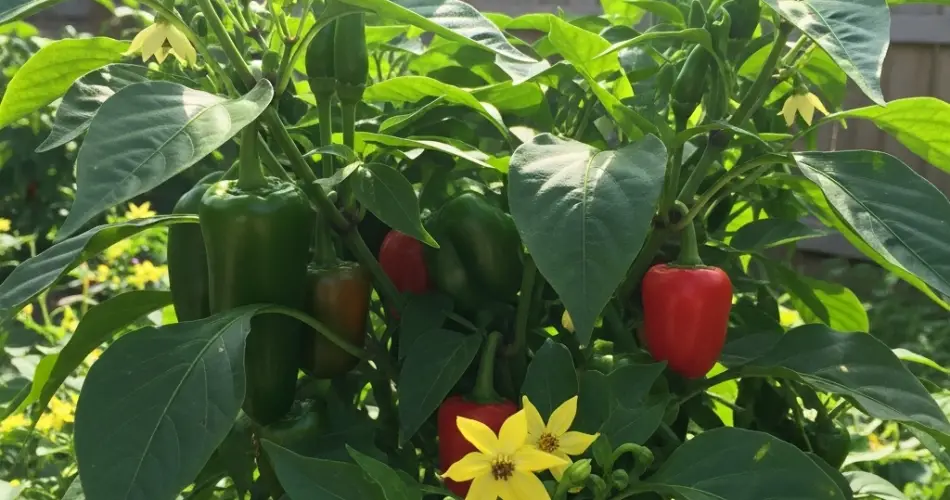If you live in a region with cold winters, you don’t have to say goodbye to your pepper plants at the end of the growing season. With the right care, pepper plants can be overwintered indoors, allowing you to save mature plants and jumpstart your next growing season. This is especially useful for heirloom or hard-to-find varieties you don’t want to lose.
Here’s a step-by-step guide to successfully overwinter your pepper plants indoors.
Why Overwinter Peppers?
Pepper plants are perennial in warm climates but are often treated as annuals in cooler areas. Overwintering allows you to:
-
Preserve productive plants and reduce the need for starting from seed.
-
Get a head start on next season’s growth.
-
Keep favorite or rare varieties alive.
Overwintered peppers typically grow faster and fruit earlier the following year.
Step 1: Choose the Right Plants
Not all pepper plants are worth overwintering. Choose healthy, disease-free plants that were productive during the growing season. Smaller, bushier varieties tend to adapt better to indoor conditions, but many larger varieties can also be overwintered with care.
Look for:
-
Plants with strong stems and good structure
-
No signs of pests or fungal issues
-
High yield or vigorous growth in the current season
Step 2: Dig Up or Pot Your Plants
Before the first frost arrives, prepare your peppers for the move indoors.
If grown in the ground:
-
Dig up the entire plant, keeping as much of the root system as possible.
-
Shake off excess soil and transplant into a container with drainage holes.
If already in containers:
-
Check the root system. If roots are circling or pot-bound, consider repotting.
-
Remove weeds or dead leaves from the topsoil.
Use a fresh, well-draining potting mix to reduce the risk of pests and disease indoors.
Step 3: Prune for Indoor Conditions
Pepper plants grown outdoors are usually too large to bring inside as-is. Prune the plant back to make it manageable and encourage healthy regrowth.
How to prune:
-
Cut the plant back by one-third to one-half of its height.
-
Remove fruit, flowers, and any leggy or damaged branches.
-
Leave the main stem and a few strong branches intact.
This helps the plant conserve energy and focus on survival, not fruit production.
Step 4: Inspect for Pests
Before bringing peppers indoors, carefully inspect them for any signs of pests. Aphids, spider mites, and whiteflies often hide under leaves and can spread to other houseplants.
Tips:
-
Spray the plant with a gentle jet of water to knock off insects.
-
Use insecticidal soap or neem oil to treat leaves and stems.
-
Isolate new arrivals from other indoor plants for 1–2 weeks.
Checking thoroughly now can save you trouble later.
Step 5: Provide the Right Indoor Conditions
Pepper plants go semi-dormant in winter and require less light and water, but still need basic care.
Light:
Place plants in the brightest spot available, such as a south-facing window. If natural light is limited, use grow lights for 12–14 hours per day to mimic summer daylight.
Temperature:
Peppers prefer daytime temps of 65–75°F (18–24°C) and nighttime lows no colder than 55°F (13°C).
Humidity:
Dry indoor air can stress plants. Mist leaves occasionally or use a humidifier to maintain humidity around 50%.
Watering:
Water less frequently—only when the top inch of soil feels dry. Overwatering during dormancy can lead to root rot.
Step 6: Monitor Growth and Maintenance
During winter, your pepper plant may drop some leaves or look less vibrant. This is normal. As long as the stem remains green and firm, your plant is alive.
Things to do:
-
Rotate the plant every few days to ensure even light exposure.
-
Trim dead leaves or small shoots to keep the plant tidy.
-
Hold off on fertilizing until early spring when new growth begins.
Step 7: Reintroduce Outdoors in Spring
When temperatures warm consistently above 60°F (15°C), it’s time to harden off your pepper plant and prepare it for outdoor life again.
How to do it:
-
Begin by placing the plant outside in a sheltered, shaded spot for a few hours each day.
-
Gradually increase sun exposure over 7–10 days.
-
Repot or plant directly into the garden when the danger of frost has passed.
At this point, resume normal watering and begin feeding with a balanced fertilizer to support blooming and fruiting.
Final Thoughts
Overwintering pepper plants indoors takes a bit of effort, but the rewards are well worth it. Not only do you save time and money in the spring, but your plants will also be stronger and more productive. With the right care, you can enjoy your favorite pepper varieties year after year—without starting from scratch each season.



